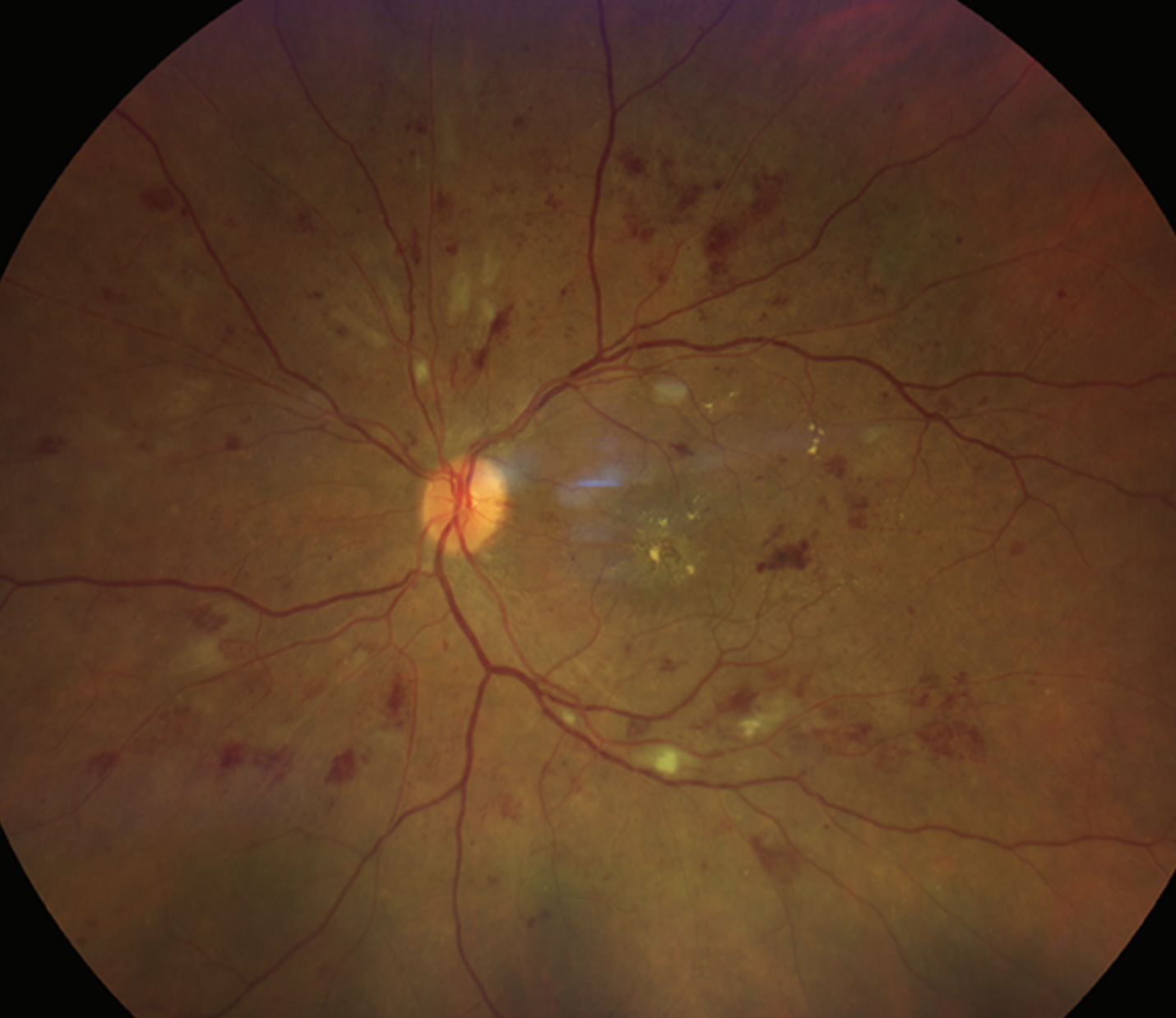 |
| Since patients with Medicaid or no insurance may have less access to preventative screening or eye care, they end up presenting more advanced stages of diabetic retinopathy compared to Medicare or private insurance patients during clinical visits. Photo: Rami Aboumourad, OD. Click image to enlarge. |
The diabetes epidemic—and the ensuing rise in diabetic eye disease—is fueled by many things, not least of which is the difficulty many vulnerable individuals have in accessing care. Insurance status is typically the decisive factor, though trouble obtaining time off work and travel hardships both also play a role. Patients can be covered by a private insurer, Medicare or Medicaid, but having no insurance can lead to greater disparities. A recent retrospective cohort study was conducted to determine how baseline diabetic retinopathy (DR) severity and later progression reflect disparities in health insurance status. In order to measure this, researchers observed the time of progression from a patient’s first nonproliferative DR diagnosis to onset of proliferative disease.
In the study, published in Ophthalmology Science, researchers followed the disease progression of 716 patients with diabetic retinopathy. To determine how insurance impacts disease progression, researchers divided the patients into three groups: Medicare/private insurance (581 patients; 81%), Medicaid (107 patients; 15%) and uninsured (28 patients; 4%).
Researchers reported that the progression from nonproliferative to proliferative DR was higher in patients with Medicaid (15%) and those who were uninsured (25%) compared to those with Medicare/private insurance (6.9%). Also, there was a greater number of patients with moderate or severe nonproliferative DR in the uninsured (57%) and Medicaid (34%) groups than in the Medicare/private insurance group (23%).
After collecting the data, the researchers eliminated confounders such as age, sex, race/ethnicity and DR type. Although the result was not statistically significant, researchers noted a trend toward an increased risk of progression to proliferative disease in patients with Medicaid compared to Medicare/private insurance patients. However, after eliminating confounders, the results between the uninsured group and the Medicare/private insurance group remained statistically significant, bolstering the original data in the cohort study.
“Our study shows that health insurance is an important risk factor for proliferative diabetic retinopathy progression, but having any insurance (i.e., Medicaid) is not enough to eliminate health disparities,” mentioned the researchers in the study. “We found that patients with Medicaid or no insurance presented to eye care visits at more advanced DR stages compared to those with Medicare/private insurance, leading to greater risk of progression to PDR,” the researchers wrote in their paper. “This disparity may be due to less access to preventive screening or eye care for Medicaid and uninsured patients.”
To improve eye care access, future directions may include “targeted public health initiatives aimed at increasing the availability of eye screenings and preventive care for this population,” they wrote.
Guo Y, Copado IA, Yonamine S, et al. The relationship between health insurance status and diabetic retinopathy progression. Ophthalmology Science 2024. [Epub ahead of print]. |

